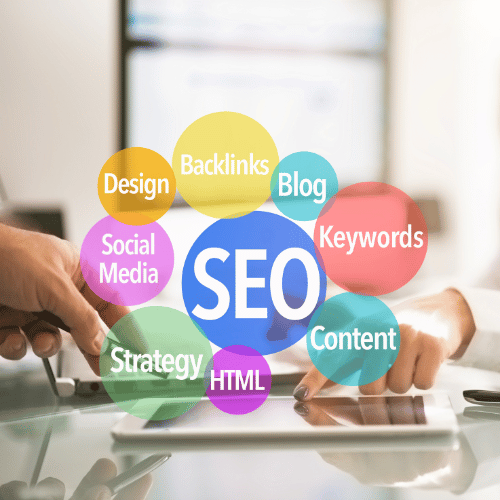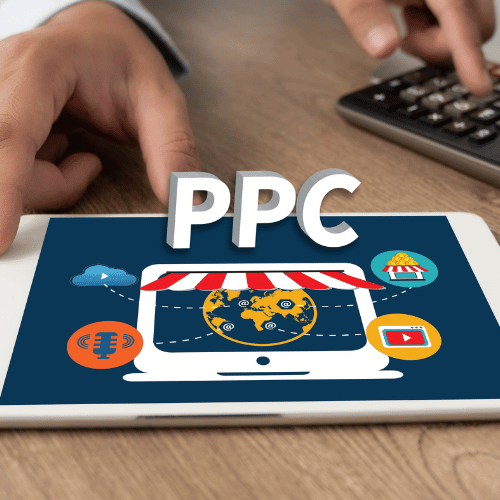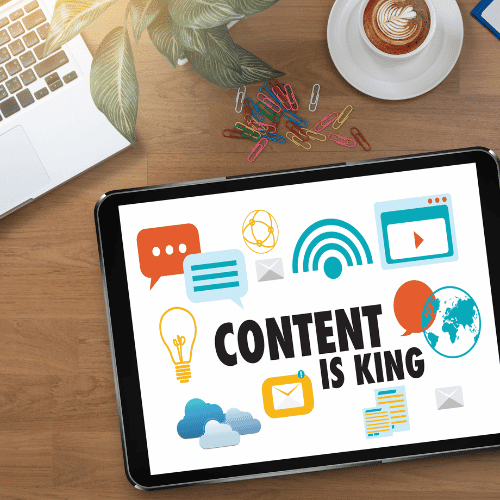Digital Marketing
Our Seven-Step Digital Marketing Approach
In a world and a time in history where the online landscape serves as the battleground for market dominance, our strategic approach provides the catalyst your business needs for the growth you want.
Harnessing the power of targeted campaigns and innovative strategies, we pave the way for businesses to thrive in the competitive digital marketplace. Join us on a transformative journey where every click, share, and engagement becomes a stepping stone toward your business success.
We recommend a seven-step approach to Digital Marketing, beginning with the definition of your market opportunity and first steps in outreach, and proceeding through increasingly growth-oriented efforts as your Marketing plan evolves.

What is the Total Addressable Market (TAM) for your products and services? Do we know that based on industry information or is it more of a board member’s hunch? How can we confirm that information more rigorously before we invest in this market?
These are the types of questions we ask and answer during a discovery session designed to develop market intelligence on the customers and regions you want to reach.

Who are the customers? In Direct to Consumer (D2C), the customer and the buying agent are often the same person. However, in Business-to-Business (B2B) transactions, there is usually a buying committee, each member of which will need different information to approve the purchase request.
Where do these people hang out online, both for work and for fun? When they talk about the products in your market, what kind of language (keywords) do they use? These are the types of information that come out during research into the Ideal Customer Profile. It’s critical for us to understand the customer before we move to the next steps, the ones that require investment.

The foundation for every online business is Search Engine Optimization (SEO). Even as disruptive technologies emerge and dominate, the offer of free, useful content and information is the heart of Google’s success (now Alphabet). It’s the ocean we swim in as content providers and Website architects.
Success here involves knowing your customers intimately, especially the language they use to discuss their market and the products that serve it. That research will serve as the foundation for our content and site structure.

The other half of Search Engine Marketing (SEM) is Paid Search, affectionately known as PPC (Pay Per Click). We strongly recommend PPC as your first paid advertising effort. Even a modest investment will offer multiple benefits, primarily giving you the opportunity to get a custom message in front of all your potential clients, but also giving you the opportunity to promote sections of your site that might be struggling due to keyword competition, which can be intense.
The access to Google’s keyword inventory that comes with a consistent Paid Search investment is an extremely valuable commodity. Over and above the value you’ll receive from getting the word out about your products and company, you have access to real-world data and competition levels.
Are your customers really searching on the terms we think they are or are there different keyword opportunities we might consider? Where are competitors investing and do we agree with their approach?

Email marketing delivers promotional content directly to a subscriber’s Inbox. Easy enough to say, but welcome to the world of customer privacy! There are strict laws around the world that govern how you can collect and make use of customer data like name, email address, telephone numbers, and more.
The best approach for most customers is to leverage a Marketing Automation Platform (MAP) like Hubspot, Adobe Marketo, or Oracle Eloqua. Those providers have guardrails in place to ensure your security and that of your customers. We can help you select the MAP that best suits your needs.

Content Marketing serves readers with entertaining and educational content to build brand awareness and drive customer loyalty. Examples include podcasts, blogs, videos, and infographics.
In Content Marketing, it’s critical to keep the Ideal Customer Profile (ICP) and associated personas at the front of mind. What are the content pieces they need to approve the next step in their buying journey, whether that is D2C or B2B? What is the customer’s intent when visiting a site that promotes your content and how can we dovetail our experience with that one?
Investing in Content Marketing helps with market expansion, customer retention, and customer database growth, all good things as you look to accelerate increased business.

Entangled. Bewildering. Constantly shifting. Welcome to Social Media Marketing, where last week’s trend is obsolete and this week’s trend is teetering.
Just kidding. It’s not that bad! At its heart, SMM is still about getting the right message to the right person at the right time. If you think about your experiences being marketed to, we think you’ll agree that, when those criteria are met, an ad is helpful and useful, not an intrusion.
If you’re in B2B and looking for conversions, SMM might not be for you. But if you’re willing to invest a relatively small amount over a long period of time, we assure you that you can increase customer awareness that you’re the team to work with when a particular pain point emerges.
Seems like a lot? Well, it is! That’s why we’re here; to help figure out where to start and how to maximize your Digital Marketing investment through measured results.
Let’s Grow Together!
Feel free to reach out whenever you’re ready to kickstart something awesome together! We’re here and excited to hear from you.

